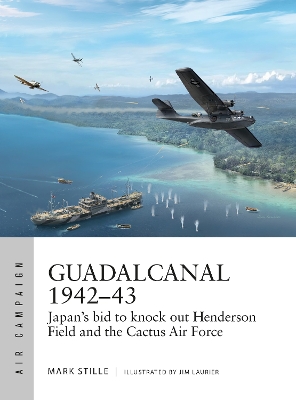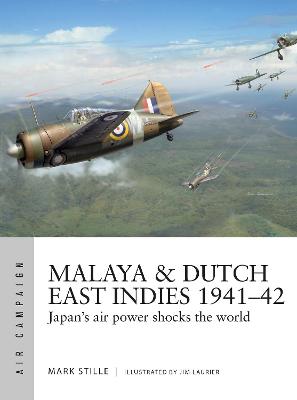Air Campaign
2 total works
The Guadalcanal campaign began with an amphibious assault in August 1942 - the US's first attempt to take the fight to the Japanese. It escalated into a desperate attritional battle on land, air, and sea, and by the time the Japanese had evacuated the last of their forces from the island in 1943, it was clear that the tide of the war had turned. The inexorable Japanese advance and the myth of Japanese invincibility shattered. In this new study of the campaign, Pacific War expert Mark Stille draws on both US and Japanese sources to give a balanced and comprehensive account of a crucial, brutal conflict. Analyzing the three Japanese attempts to retake the island in the face of ferocious American resistance, this book shows how the battle was won and lost, and how it affected the outcome of the Pacific War as a whole.
Japan's attack on Pearl Harbor in 1941 was quickly followed by a rapid invasion of Malaya, a plan based entirely on the decisive use of its airpower. While the British was inadequately prepared, they likewise relied on the RAF to defend their colony. The campaign was a short match between Japanese airpower at its peak and an outgunned colonial air force, and its results were stunning.
The subsequent Dutch East Indies campaign was even more dependent on airpower, with Japan having to seize a string of island airfields to support their leapfrog advance. Facing the Japanese was a mixed bag of Allied air units, including the Dutch East Indies Air Squadron and the US Far East Air Force. The RAF fell back to airfields on Sumatra in the last stages of the Malaya campaign, and was involved in the last stages of the campaign to defend the Dutch colony.
For the first time, this study explores these campaigns from an airpower perspective, explaining how and why the Japanese were so devastatingly effective.
The subsequent Dutch East Indies campaign was even more dependent on airpower, with Japan having to seize a string of island airfields to support their leapfrog advance. Facing the Japanese was a mixed bag of Allied air units, including the Dutch East Indies Air Squadron and the US Far East Air Force. The RAF fell back to airfields on Sumatra in the last stages of the Malaya campaign, and was involved in the last stages of the campaign to defend the Dutch colony.
For the first time, this study explores these campaigns from an airpower perspective, explaining how and why the Japanese were so devastatingly effective.

